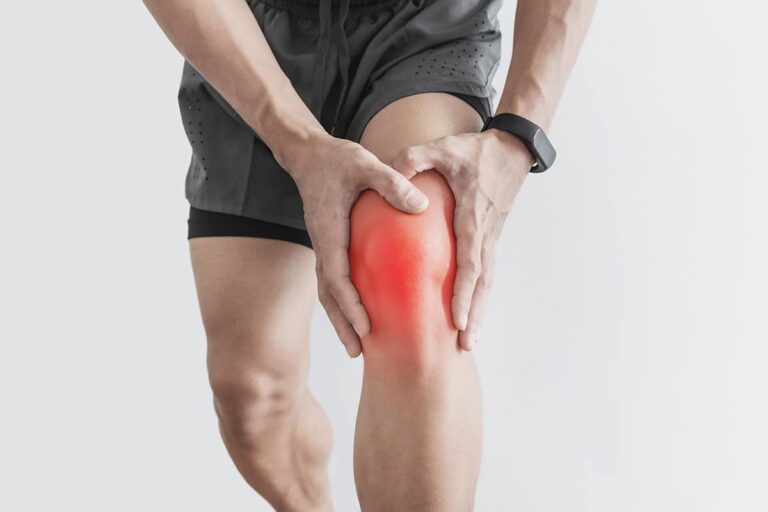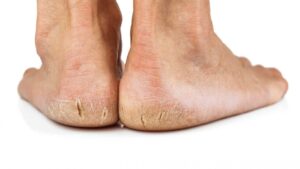Understanding Knee Pain: A Comprehensive Guide
Knee pain is one of the most common musculoskeletal complaints among Australians of all ages. Whether you’re dealing with back pain knee pain or knee pain during night, understanding the root causes, effective treatments, and preventative strategies can help you get back on your feet faster. At ModPod Podiatry, we see a diverse range of knee-related concerns, from medial knee pain to pain on outside of knee, and we are committed to helping our clients reclaim an active, healthy lifestyle. In this blog post, we’ll explore the various types of knee pain, common causes, and how professional podiatric care can make all the difference.
1. Why Does Knee Pain Occur?
Knee pain often arises due to a combination of factors, including overuse, injury, poor biomechanics, and pre-existing health conditions. As one of the largest and most complex joints in the human body, the knee is subject to considerable stress. The joint is responsible for absorbing the impact of daily activities such as walking, running, and bending. Over time, structural imbalances in the foot, ankle, or hips can cause compensatory changes in gait and posture, leading to knee pain while bending or even back pain knee pain.
Biomechanics and Alignment
Proper alignment of the hips, knees, ankles, and feet is crucial for efficient movement. Misalignment in any of these areas can place undue stress on the knee joint. For instance, flat feet or excessively high arches can alter weight distribution, contributing to knee pain interior or interior knee pain. Similarly, hip problems and weak gluteal muscles may cause the knee to turn inward or outward, resulting in discomfort like inner lateral knee pain or knee pain inner knee.
Injury and Overuse
Acute injuries—such as ligament tears, meniscal damage, or fractures—often lead to sudden and severe knee pain. However, more insidious causes like repetitive strain or chronic inflammation can manifest as pain in medial knee or inside knee pain. Running, jumping, or prolonged standing may exacerbate symptoms. Overuse injuries can also contribute to night time knee pain, especially if the joint is inflamed or irritated at the end of a long day.
2. Common Types of Knee Pain
When we talk about knee pain, it’s important to be specific about where and when the pain occurs. Each variant can shed light on its underlying causes:
-
Medial Knee Pain or Pain in the Medial Knee
-
Often linked to strain or injury of the medial collateral ligament (MCL) or medial meniscus.
-
Individuals with flat feet or overpronation are more prone to medial knee pain due to altered knee alignment.
-
-
Knee Pain Interior or Interior Knee Pain
-
May indicate patellofemoral pain syndrome, bursitis, or inflammation behind the kneecap.
-
Often exacerbated by activities like squatting, climbing stairs, or sitting with bent knees for extended periods.
-
-
Inner Lateral Knee Pain
-
Although less common, pain on the inner-lateral aspect of the knee can be related to minor misalignments or referred pain patterns.
-
Accurate diagnosis is crucial, as it may be connected to hip or foot posture.
-
-
Pain on Outside of Knee
-
Commonly associated with iliotibial band syndrome (ITBS), especially in runners.
-
Can also be triggered by lateral meniscus injuries.
-
-
Night Time Knee Pain or Knee Pain at Night
-
May be a sign of osteoarthritis, bursitis, or chronic inflammatory conditions.
-
Can be related to muscle tension and insufficient recovery after activity.
-
Sometimes referred to as knee pain during night, this discomfort can disrupt sleep quality, affecting overall wellbeing.
-
-
Knee Pain While Bending
-
Typically associated with patellofemoral pain syndrome or patellar tendonitis.
-
Tight quads or hamstrings can exacerbate this condition, causing the joint to work harder during bending movements.
-
-
Back Pain Knee Pain
-
Sometimes knee pain and back pain go hand in hand. For instance, sciatica or lower back issues might alter gait, ultimately impacting the knees.
-
Investigating these interconnected areas helps ensure a holistic treatment approach.
-
3. Risk Factors for Knee Pain
Certain factors increase one’s susceptibility to knee pain:
-
Age: Conditions like osteoarthritis become more common with age, especially causing night time knee pain or stiffness first thing in the morning.
-
Occupational Hazards: Jobs requiring long periods of standing, kneeling, or repetitive knee bending can predispose you to conditions like bursitis or tendonitis.
-
Active Lifestyle: Running, high-intensity sports, or improper training routines can lead to overuse injuries.
-
Foot Mechanics: Issues such as overpronation, flat feet, or a leg length discrepancy can lead to misalignment and stress on the knee joint.
-
Weight: Excess weight places extra force on the knees, aggravating existing conditions like interior knee pain or medial knee pain.
4. The Podiatrist’s Role in Alleviating Knee Pain
You might wonder why a podiatrist is essential for treating knee pain. While physiotherapists and GPs play critical roles, a podiatrist offers unique expertise in foot and lower limb mechanics. At ModPod Podiatry, we use a thorough biomechanical assessment to pinpoint how your gait, foot posture, and footwear choices might be contributing to knee pain inner knee or pain on outside of knee.
Biomechanical Assessment
During this evaluation, we analyse how you stand, walk, and run. We check for any misalignments or compensations in the feet, ankles, knees, and hips. For example, if your arches collapse excessively, it can cause internal rotation of the tibia, ultimately leading to interior knee pain or pain in medial knee. By addressing these underlying issues, we target the root cause rather than merely treating symptoms.
Footwear and Orthotics
Choosing the right footwear is paramount for alleviating knee stress. Supportive shoes with adequate cushioning and arch support can reduce repetitive strain. Custom orthotics can also correct biomechanical imbalances, distributing pressure more evenly and potentially reducing knee pain during night or knee pain while bending. A properly fitted orthotic might be particularly beneficial if you experience knee pain at night related to poor foot posture.
5. Effective Treatments and Management Strategies
1. Targeted Exercises
Strengthening and flexibility exercises can enhance knee stability and alleviate inside knee pain. Here are a few exercises often recommended:
-
Quad Strengthening: Wall sits and straight-leg raises help build the muscles that support the knee cap.
-
Glute and Hip Stability: Clamshells, bridges, and side-lying leg lifts help maintain proper alignment of the leg.
-
Calf and Hamstring Stretches: Tight calves and hamstrings can pull on the knee joint, exacerbating conditions like knee pain interior.
2. Physical Therapy
Manual therapy, K-Laser, and taping techniques to reduce inflammation. They may also recommend exercises tailored to your condition, whether you’re dealing with inner lateral knee pain or pain in medial knee.
3. Lifestyle Modifications
Making small changes to your daily routine can help you manage night time knee pain and other forms of knee discomfort:
-
Maintain a Healthy Weight: Even modest weight loss can lessen stress on the knees.
-
Opt for Low-Impact Activities: Swimming, cycling, or using an elliptical trainer can help you stay active without exacerbating knee pain while bending.
-
Modify High-Impact Exercises: If you’re a runner, consider alternating with lower-impact workouts to give your knees a break.
4. Medication and Supplements
Over-the-counter anti-inflammatories can offer short-term relief from pain and swelling, particularly if knee pain at night disrupts your sleep. Some individuals also find relief from supplements like glucosamine and chondroitin, although research results vary.
5. Advanced Therapies
In more severe cases, treatments may include cortisone injections or even surgery. However, many Australians with knee pain interior can find success with conservative, non-surgical interventions when guided by a knowledgeable podiatrist and healthcare team.
6. Preventing Knee Pain: Proactive Tips
Preventing knee pain is often easier than managing it after it develops. A few proactive strategies include:
-
Invest in Quality Footwear
Shoes should be replaced every 600-800 kilometres if you’re a runner, or sooner if you notice worn-down soles. Well-fitted shoes help maintain correct alignment, reducing the likelihood of back pain knee pain and knee pain interior. -
Warm Up and Cool Down
Simple stretches and light exercises before and after physical activity can help maintain flexibility, preventing muscle imbalances that lead to inner lateral knee pain or medial knee pain. -
Strength Training
Incorporate exercises that target your core, hips, and legs. Strengthening these areas can reduce joint stress and help stave off pain on outside of knee or knee pain inner knee. -
Gradual Progression
If you’re trying a new sport or fitness routine, pace yourself. Overloading your joints too quickly can lead to overuse injuries, such as night time knee pain or knee pain while bending. -
Regular Check-Ups
Don’t wait for nagging aches to become chronic issues. Regular assessments with a podiatrist—along with a GP or physiotherapist—can help catch subtle biomechanical problems before they escalate.
7. When to Seek Professional Help
While occasional knee soreness might respond well to rest and home treatments, it’s crucial to consult a healthcare professional if:
-
The pain lasts for more than a few weeks.
-
Swelling, redness, or a feeling of instability around the joint persists.
-
You have difficulty bearing weight on the affected leg.
-
You experience knee pain at night frequently, disrupting your sleep and daily life.
A prompt consultation with a podiatrist can help you pinpoint whether inside knee pain is due to biomechanical issues in your feet or if you need a broader, multi-disciplinary approach.
8. How ModPod Podiatry Can Help
At ModPod Podiatry, we take pride in offering patient-focused, evidence-based care. Our team understands the nuances of knee pain interior, medial knee pain, inner lateral knee pain, and more. By combining state-of-the-art diagnostics with personalised treatment plans, we aim to help you:
-
Relieve Pain: Identify the underlying biomechanical causes of discomfort and find immediate strategies for relief.
-
Restore Mobility: Regain confidence in everyday activities, whether you’re walking around the block or training for a marathon.
-
Prevent Future Issues: Implement lifestyle, footwear, and exercise adjustments to address current concerns and stop new problems before they start.
We know how frustrating it can be to deal with knee pain while bending, especially if it disrupts your favourite activities. That’s why our approach is both thorough and empathetic. From the moment you step into our clinic, we’re dedicated to helping you feel supported, informed, and on track toward a healthier life.
9. Final Thoughts
Knee pain is a multifaceted issue influenced by alignment, activity levels, and overall health. Whether you struggle with pain in medial knee, knee pain during night, or discomfort stemming from back pain knee pain, there’s hope for relief and improved function. By addressing the root causes—often found in the biomechanics of the feet and legs—we can reduce symptoms and foster a more active, fulfilling lifestyle.
Remember, you don’t have to settle for ongoing night time knee pain or let knee pain at night rob you of restful sleep. Early intervention, professional guidance, and consistent follow-through are the keys to long-lasting relief. At ModPod Podiatry, our mission is to help Australians step confidently into each new day—free from the limitations of chronic knee pain.
If you’re ready to say goodbye to knee pain interior, inside knee pain, or any other nagging discomfort, contact us at ModPod Podiatry. Let our expert team craft a personalised treatment plan so you can get back to enjoying all the activities you love.










